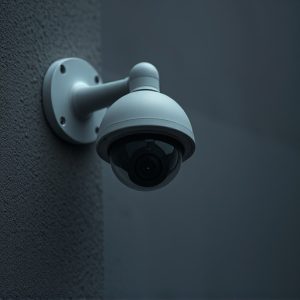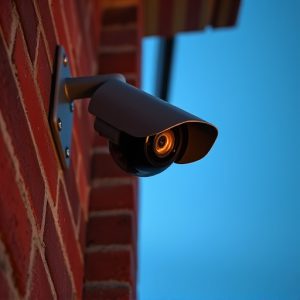Unveiling Hidden Security Cameras: Legal, Types, Setup & Detection
Hidden security cameras, seamlessly integrated into everyday objects, offer advanced surveillance so…….
Hidden security cameras, seamlessly integrated into everyday objects, offer advanced surveillance solutions for homes and businesses. With high-definition video capture, motion sensors, and remote accessibility via smartphone apps, they enhance safety and peace of mind. However, their deployment raises legal and ethical concerns regarding privacy protection and potential misuse. These cameras can be deployed in various settings, from homes to public spaces, offering versatile surveillance solutions. Effective setup involves strategic planning and discretion, while staying ahead of hidden cameras requires regular inspections and specialized tools for maximum privacy protection.
Hidden security cameras have become a ubiquitous presence in our world, offering both security and privacy concerns. This comprehensive guide delves into every aspect of these concealed devices. We explore their understanding, legal boundaries, types, setup, and detection methods. With an eye on ethical implications, this article equips readers with knowledge to navigate the complex landscape of hidden surveillance cameras. Discover where they are used, how to set them up, and crucial tips for awareness in today’s digital era.
Understanding Hidden Security Cameras: A Comprehensive Overview
Hidden security cameras, also known as covert surveillance cameras, are a sophisticated and increasingly common tool for enhancing home and business security. These cameras are designed to operate discreetly, often blending into their surroundings, making it impossible for potential intruders to anticipate their presence. From small, minimalistic designs that resemble everyday objects like smoke detectors or plants, to more advanced models disguised as ceiling light fixtures or electrical outlets, there’s a hidden camera to suit nearly every need and location.
Their versatility is matched only by their capabilities. Hidden security cameras can capture high-definition video, often with night vision functionality, allowing for clear images even in low-light conditions. Many are equipped with motion sensors, triggering recordings only when activity is detected, which helps conserve storage space and battery life. Additionally, these cameras can be remotely accessed via smartphone apps or computers, enabling real-time monitoring from anywhere at any time. This level of accessibility and discreteness makes hidden security cameras a formidable asset in the ongoing pursuit of enhanced safety and peace of mind.
Legal Considerations and Ethical Implications of Hidden Cameras
The use of hidden security cameras has both legal and ethical dimensions that must be carefully considered. While they offer enhanced privacy protection and deterrence against criminal activities, their deployment raises significant concerns regarding individual rights and freedoms. Many jurisdictions have specific laws governing the installation and use of such devices to ensure they do not infringe upon citizens’ reasonable expectations of privacy. These legal frameworks often dictate where and how hidden cameras can be placed, who has access to the recorded footage, and under what circumstances it can be used as evidence in court.
Ethically, hidden security cameras challenge the balance between public safety and personal privacy. The mere presence of these devices can create an atmosphere of surveillance, making individuals feel constantly observed and potentially leading to a chilling effect on free expression and behavior. Additionally, unauthorized or misleading use of hidden cameras—such as placing them in places where people reasonably expect privacy, like restrooms or changing areas—can violate ethical guidelines and result in severe repercussions, including legal action and damage to the reputation of the camera’s installer.
Types and Applications: Where Are They Used?
Hidden security cameras, also known as covert or concealed cameras, come in various types designed for different applications. These include wireless cameras that can be easily installed and hidden in plain sight, ideal for home and business security monitoring. Miniaturized CCTV systems are another popular choice, offering high-quality video and audio capture, making them suitable for surveillance in public spaces, retail stores, and offices.
They are used extensively in areas requiring discreet observation, such as banks, airports, and government facilities, where the presence of cameras may pose a security risk or impact operations. Additionally, hidden cameras find application in the field of environmental monitoring, helping track wildlife behavior without disturbing their natural habitats. Their versatility allows for tailored surveillance solutions, ensuring peace of mind and enhanced safety measures.
Setting Up and Maintaining a Hidden Surveillance System
Setting up a hidden surveillance system involves careful planning and discretion. The first step is identifying placement locations that offer unobtrusive yet strategic views of areas to be monitored, such as entry points, valuable assets, or high-traffic zones. These hidden security cameras should be installed discreetly, utilizing creative techniques like mimicking everyday objects (like plants, smoke detectors, or light switches) to avoid detection. Once placed, the system needs to be connected to a reliable power source and, in most cases, a recording device for storing footage. Regular maintenance is crucial; this includes checking battery life, ensuring clear camera views, and reviewing recorded data to ensure the system functions optimally. By keeping these aspects in mind, you can create an effective hidden security camera network that provides peace of mind and enhanced safety.
Detecting and Countering Hidden Cameras: Tips for Awareness
Staying one step ahead of hidden surveillance cameras is crucial for maintaining privacy in today’s digital era. One of the best defenses against these concealed devices is awareness and vigilance. Begin by conducting regular visual inspections, especially in areas where privacy is a concern, such as homes, offices, or public spaces. Look for any unusual objects or placements that could host a hidden security camera. Pay attention to details like shadows, subtle reflections, or small gaps that might indicate the presence of a camera lens.
Additionally, utilizing specialized tools designed to detect wireless signals can be effective. These devices emit specific frequencies that disrupt the operation of hidden cameras, providing an extra layer of protection. Keep in mind that preventing installation is just as important as detection. Regularly updating security systems and employing advanced encryption methods for data transmission can deter potential attackers from setting up hidden surveillance cameras.


